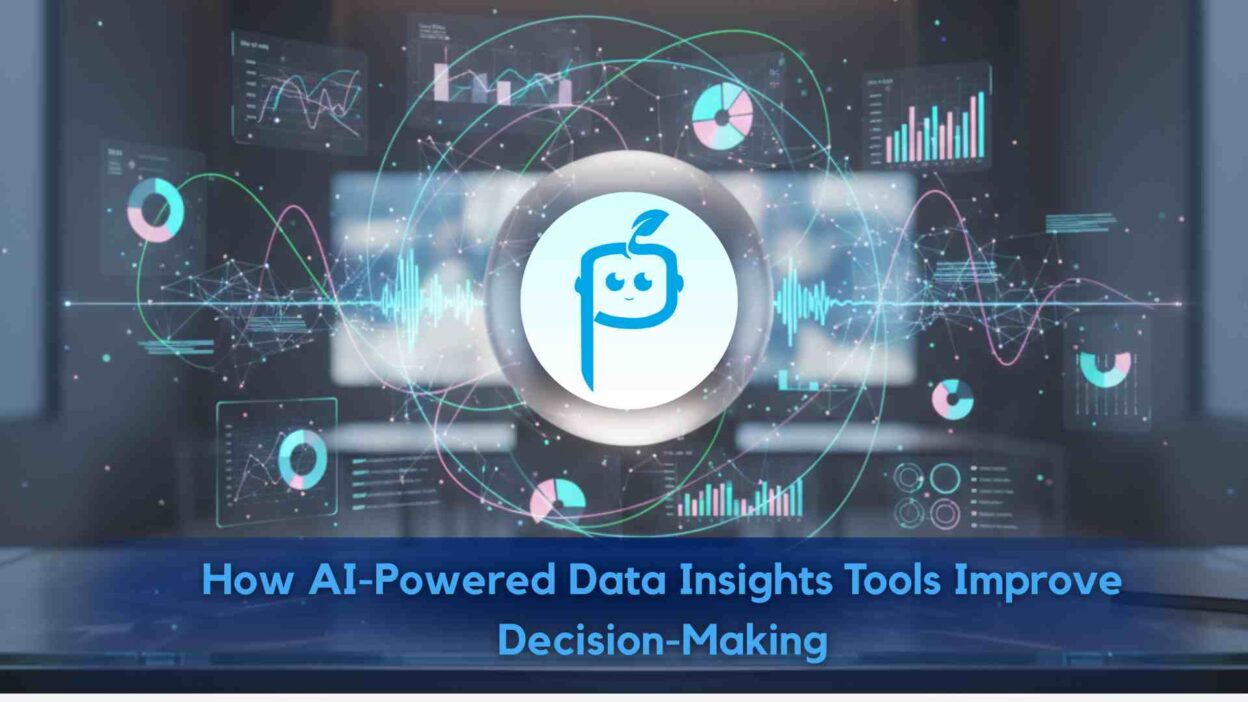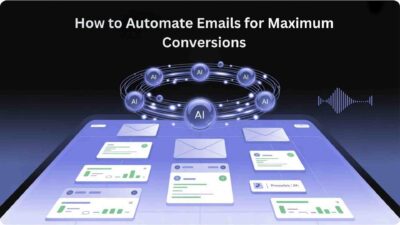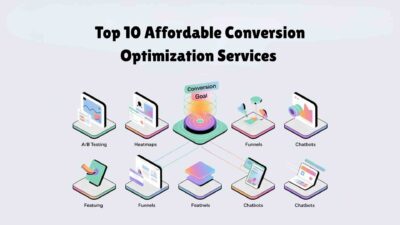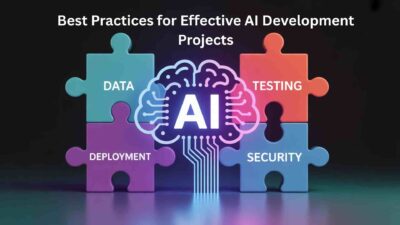Introduction
TL;DR Business leaders face countless decisions daily. Each choice impacts revenue and growth. Data helps guide these critical moments. Raw data alone doesn’t provide answers. You need intelligence extracted from information. Traditional analysis takes too much time. Manual processing misses hidden patterns. Critical insights arrive too late.
Table of Contents
AI-powered data insights tools change everything about decision-making. Your business gains competitive advantages immediately. Decisions become faster and more confident. Risk decreases while opportunities increase.
Companies struggle with data overload today. Information pours in from countless sources. Customer behaviors generate endless streams. Sales transactions create mountains of records. Marketing campaigns produce endless metrics. Social media adds another layer entirely. Making sense of everything seems impossible. Your team drowns in spreadsheets daily. Analysis paralysis stops progress completely.
Smart organizations embrace modern solutions now. The results speak for themselves clearly. Revenue grows faster than competitors. Customer satisfaction reaches new heights. Operational efficiency improves dramatically.
This guide explores how these tools transform decision-making. Organization can achieve similar results.
The future belongs to data-driven companies. Those who hesitate fall behind quickly. Market leaders adopt new technologies early. Your competition is already moving forward. The time to act is now.
AI-powered data insights tools represent the future. They make complex analysis accessible. They democratize advanced analytics completely. Every team member gains powerful capabilities. Your entire organization becomes smarter. Decision quality improves across all levels.
Understanding AI-Powered Data Insights Tools
What Makes These Tools Different
Traditional analytics require manual work. Analysts spend hours cleaning data. They build reports one at a time. They update dashboards manually. The process consumes valuable time. Insights arrive after opportunities pass. Decisions get made with outdated information.
AI-powered data insights tools automate everything completely. These platforms process data at incredible speeds. What takes humans weeks happens in seconds. Complex calculations run automatically. Statistical models execute without supervision. Predictive analytics are generated constantly. Your team accesses insights in real-time. Decisions happen at optimal moments.
Core Capabilities That Drive Value
Pattern recognition forms the foundation. Algorithms scan millions of data points. They identify correlations humans miss. They spot anomalies requiring attention. Trends emerge from noisy data. Your understanding deepens significantly.
Predictive modeling forecasts future outcomes. Historical data trains sophisticated algorithms. The system learns from past patterns. It projects likely future scenarios. Confidence scores accompany each prediction. You make decisions with better foresight.
Natural language processing enables easy interaction. You ask questions in plain English. The system understands your intent. It generates relevant insights automatically. No technical skills are required. Everyone can access powerful analytics.
Automated reporting saves countless hours. Dashboards update in real-time constantly. Visualizations adjust to new data. Alerts notify you of important changes. Reports are generated and distributed automatically. Your team stays informed effortlessly.
Technologies Powering the Platform
Machine learning algorithms form the core. They learn from data without explicit programming. Patterns emerge through mathematical optimization. Models improve with additional information. Accuracy increases over time naturally.
Deep learning handles complex data types. Neural networks process images and text. Unstructured data becomes analyzable. Video content yields valuable insights. Audio recordings reveal customer sentiment.
Cloud computing provides the necessary infrastructure. Processing power scales instantly as needed. Storage capacity grows without limits. Global access happens from anywhere. Collaboration becomes seamless across locations.
AI-powered data insights tools combine multiple technologies. They create capabilities impossible previously. Your organization gains superhuman analytical power. Competitive advantages emerge from superior intelligence. Market leadership follows naturally from better decisions made consistently.
Key Benefits for Business Decision-Making
Speed: Making Decisions in Real-Time
Business moves faster than ever before. Market conditions change within hours. Customer preferences shift rapidly. Competitor actions demand immediate responses. Delayed decisions cost money and opportunities.
AI-powered data insights tools deliver instant analysis. Data processing happens in seconds. Complex calculations are completed automatically. Insights appear immediately when needed. Your team responds to situations quickly. Opportunities get captured before disappearing. Threats get addressed before escalating.
Real-time dashboards show current conditions. Metrics update continuously throughout day. Alerts notify teams of important changes. Decision-makers access information instantly. No waiting for weekly reports. No delays for analyst availability. Speed becomes a competitive weapon.
Accuracy: Eliminating Human Error and Bias
Humans make mistakes when analyzing data. Fatigue reduces attention to detail. Confirmation bias skews interpretation. Emotional factors influence conclusions. Personal preferences affect recommendations. These errors cost businesses significantly.
Automated systems maintain consistent accuracy. Algorithms apply rules uniformly, always. No fatigue degrades performance quality. No emotional bias affects results. Mathematical precision guides every calculation. Error rates drop to minimal levels.
Machine learning improves accuracy over time. Models learn from corrective feedback. Algorithms adapt to changing patterns. Predictive power increases with experience. Your insights become more reliable constantly.
Depth: Uncovering Hidden Insights
Surface-level analysis misses important details. Complex relationships stay hidden in data. Subtle patterns escape human observation. Correlation clusters remain undiscovered. Strategic opportunities go unnoticed completely.
AI-powered data insights tools dive deep into information. Multi-dimensional analysis uncovers hidden truths. Your understanding reaches unprecedented depth.
Predictive models forecast future outcomes. Your planning becomes more sophisticated. Strategic advantage grows from superior foresight.
Scale: Analyzing Unlimited Data Sources
Manual analysis has clear limits. Analysts can only process so much. Data sources must be prioritized. Some information never gets examined. Potentially valuable insights get missed.
Automated platforms handle unlimited scale. Nothing falls through analytical cracks.
Integration capabilities connect everything together. Customer data merges with sales information. Marketing metrics combine with financial results. Supply chain data integrates with demand forecasts. Operational metrics link to customer satisfaction. Holistic understanding emerges from complete visibility. Decisions consider all relevant factors simultaneously.
Transforming Key Business Functions
Sales: Predicting Customer Behavior
Sales teams need to know where to focus. Which leads will actually convert? What products interest specific customers? When should salespeople reach out? These questions determine success rates.
AI-powered data insights tools analyze customer patterns. Sales efficiency improves.
Historical data trains predictive models. Past purchases reveal preference patterns. Browsing behavior indicates current interests. Email engagement shows receptiveness levels. Social activity exposes pain points. The system synthesizes all signals. Salespeople receive actionable guidance daily.
Revenue forecasting becomes far more accurate. Algorithms project pipeline conversion rates. They estimate deal close probabilities. They identify at-risk opportunities early. Sales leaders allocate resources optimally. Quota planning reflects realistic expectations. Board presentations gain credibility through precision.
Marketing: Optimizing Campaign Performance
Marketing budgets demand maximum efficiency. Every dollar must generate measurable returns. Campaign performance varies widely. Some channels outperform others significantly. Attribution remains complex and challenging.
Automated analytics reveal what actually works. Marketing ROI increases substantially.
A/B testing happens continuously at scale. Multiple variations run simultaneously. Statistical significance gets calculated automatically. Winning approaches get implemented immediately. Constant optimization becomes the norm. Campaign performance improves over time.
Customer lifetime value predictions guide strategy. Models forecast long-term revenue potential. They identify the most valuable customer segments. Acquisition spending aligns with actual value. Marketing investments generate better returns. Growth accelerates through smarter targeting.
Operations: Improving Efficiency and Reducing Costs
Operational inefficiencies hide in complex processes. Bottlenecks cause delays and frustration. Resource allocation mismatches create waste. Quality issues emerge unpredictably. Costs exceed necessary levels.
AI-powered data insights tools identify improvement opportunities. Operational excellence becomes achievable.
Inventory management gains precision. Demand forecasting improves significantly. Stock levels optimize automatically. Carrying costs decrease substantially. Stockouts become rare events. Customer satisfaction increases.
Supply chain visibility extends completely. Real-time tracking monitors every shipment. Delay predictions enable proactive responses. Alternative routing gets suggested automatically. Supplier performance gets scored objectively. Risk management improves dramatically.
Finance: Enhancing Planning and Risk Management
Financial planning requires accurate forecasting. Revenue projections guide strategic decisions. Expense predictions determine budgets. Cash flow management prevents crises. Risk assessment protects the business.
Predictive models generate sophisticated forecasts. Planning accuracy reaches new levels.
Fraud detection happens in real-time automatically. Anomalous transactions trigger immediate alerts. Suspicious patterns get investigated quickly. Losses get minimized through rapid response. Security strengthens without manual monitoring. Financial controls become more effective.
Practical Implementation Steps
Assessing Your Organization’s Readiness
Implementation success starts with an honest assessment. You must understand your current state. What data do you actually have? How clean and organized is it? What systems store information? Who needs access to insights? These questions guide your approach.
Data maturity varies across organizations. Some companies have robust data infrastructure. Others lack basic systems entirely. Your starting point determines the path forward. Realistic assessment prevents false starts. Expectations align with actual capabilities.
Team capabilities matter significantly. Do you have data-literate employees? Can people interpret analytical outputs? Will they trust algorithmic recommendations? Cultural readiness affects adoption rates. Training needs must be identified early.
Choosing the Right Platform
AI-powered data insights tools vary widely in capabilities. Some serve specific industries exclusively. Others provide general-purpose functionality. Enterprise platforms cost significantly more. Small business solutions offer affordability. Your selection must match organizational needs.
Evaluate integration capabilities thoroughly. Can the platform connect to existing systems? Does it support your data sources? Will implementation disrupt current operations? Seamless integration determines deployment speed. Technical compatibility cannot be overlooked.
Scalability requirements deserve careful consideration. Will the platform grow with you? Can it handle increasing data volumes? Does pricing scale reasonably? Future needs matter as much as current ones. Short-term thinking creates long-term problems.
User experience affects adoption rates dramatically. Is the interface intuitive and clean? Can non-technical people use it easily? Does it require extensive training? Complexity kills user enthusiasm quickly. Simplicity drives widespread adoption.
Building a Strong Data Foundation
Quality data enables quality insights. Garbage in creates garbage out inevitably. You must clean existing data first. Duplicate records need elimination. Missing values require resolution. Inconsistent formats demand standardization. This foundation work takes time.
Data governance establishes necessary rules. Who owns each data set? What quality standards apply? How often does information update? Who can access what data? Clear policies prevent future chaos. Governance scales analytical capabilities.
Integration connects scattered information sources. Customer data lives in CRM systems. Financial information sits in accounting platforms. Operations data resides in ERP systems. Marketing metrics exist in campaign tools. Connecting everything creates complete visibility. Holistic insights become possible.
Training Teams for Success
Technical training covers platform functionality. Users learn navigation and features. Hands-on practice builds confidence.
Analytical thinking skills need development. People must learn to interpret insights. They need to question unexpected results. They should validate recommendations appropriately. Critical thinking complements technical skills. Both together drive successful adoption.
Measuring ROI and Business Impact
Defining Success Metrics
Implementation requires clear success criteria. What specific improvements do you expect? How will you measure progress? What timeline seems reasonable? Vague goals lead to disappointment. Specific metrics enable accountability.
Quantitative measures track hard numbers. Revenue growth rates show business impact. Cost reduction percentages demonstrate efficiency gains. Decision speed improvements indicate process enhancement. Customer satisfaction scores reflect service quality. These numbers tell the story.
Qualitative benefits matter too significantly. Employee confidence in decisions improves. Team collaboration increases through shared insights. Strategic planning becomes more sophisticated. Innovation accelerates from a deeper understanding. These softer benefits create real value.
Calculating Financial Returns
Direct cost savings appear quickly. Analyst headcount needs may decrease. Report generation time drops dramatically. Manual data processing disappears completely. Labor costs decline measurably. These savings justify the investment partially.
Revenue improvements drive larger returns. Better decisions capture more opportunities. Improved targeting increases conversion rates. Optimized pricing maximizes profit margins. Customer retention improves through better service. Top-line growth accelerates noticeably.
Risk reduction delivers hidden value. Fraud losses decrease substantially. Compliance violations become rare. Operational failures drop significantly. These avoided costs boost profitability. Prevention beats cure financially.
Implementation costs must be calculated honestly. Software licensing requires ongoing payments. Infrastructure upgrades demand capital investment. Training programs consume time and money. Change management needs dedicated resources. Total cost of ownership includes everything.
Tracking Improvement Over Time
Baseline measurements establish starting points. Document current decision speed. Record existing accuracy rates. Note current cost levels. Measure customer satisfaction scores. These baselines enable comparison later.
Regular progress reviews maintain momentum. Monthly metric reviews track trends. Quarterly assessments evaluate strategic impact. Annual analyses calculate comprehensive ROI. Consistent measurement drives continuous improvement.
AI-powered data insights tools should show clear value. Decisions should happen faster than before. Accuracy should improve measurably. Costs should decline over time. Revenue should grow more quickly. Teams should feel more confident. These outcomes justify the investment. Your organization becomes demonstrably smarter. Competitive advantages emerge from superior intelligence. Market position strengthens through better decisions. The ROI becomes undeniable over time.
Overcoming Common Implementation Challenges
Addressing Data Quality Issues
Poor data quality sabotages analytical efforts. Inaccurate information produces worthless insights. Incomplete records create blind spots. Inconsistent formatting confuses algorithms. These problems must be fixed first.
Data cleansing requires dedicated effort. You must identify quality issues systematically. Duplicates need detection and removal. Missing values require investigation and resolution. Format inconsistencies demand standardization. This work takes time but matters critically.
Ongoing quality maintenance prevents regression. Automated validation catches errors early. Regular audits identify emerging problems. Quality metrics track improvement progress. Continuous monitoring maintains high standards. Data quality becomes a permanent priority.
Managing Change Resistance
People resist new technologies naturally. Employees fear job displacement. Managers distrust algorithmic recommendations. Teams prefer familiar processes. This resistance slows adoption significantly.
Communication addresses fears directly. Explain benefits clearly and honestly. Show how tools augment human capabilities. Demonstrate job security through new opportunities. Share success stories from early adopters. Transparent communication builds trust gradually.
Involvement creates buy-in effectively. Include teams in platform selection. Solicit input on implementation approach. Invite feedback on user experience. Incorporate suggestions where feasible. Participation fosters ownership and enthusiasm.
Ensuring Data Security and Privacy
AI-powered data insights tools access sensitive information. Customer data requires strong protection. Financial records demand secure handling. Proprietary information needs confidentiality. Security breaches cause catastrophic damage.
Robust security measures protect data effectively. Encryption secures data during transmission. Access controls limit information exposure. Authentication verifies user identities. Audit trails track all activity. Security becomes multi-layered and comprehensive.
Privacy compliance meets regulatory requirements. GDPR applies to European customer data. CCPA governs California resident information. Industry-specific regulations create additional obligations. Compliance prevents legal penalties. Privacy protection builds customer trust.
Building Internal Expertise
External vendors provide initial implementation. Long-term success requires internal capabilities. Your team must understand the platform. They need troubleshooting abilities. They should optimize configurations. Internal expertise reduces dependency.
Hiring brings specialized skills. Data scientists understand algorithms deeply. Analytics engineers build robust pipelines. Business analysts translate insights to action. Building the right team takes time. Investment in talent pays long-term dividends.
Training develops existing employee skills. Online courses teach fundamental concepts. Vendor training covers platform specifics. Mentorship accelerates skill development. Continuous learning becomes a cultural norm.
Real-World Success Stories
Retail: Personalizing Customer Experiences
A major retailer struggled with generic marketing. Customers received irrelevant product recommendations. Email campaigns achieved low engagement rates. Conversion rates are consistently disappointing. Revenue growth stagnated below potential.
They deployed AI-powered data insights tools across channels. The platform analyzed purchase history comprehensively. It identified preference patterns for individual customers. It predicted future buying interests accurately. Personalized recommendations replaced generic suggestions.
Results exceeded expectations dramatically. Email click-through rates doubled within months. Product recommendation conversion tripled quickly. Average order values increased by twenty-five percent. Customer satisfaction scores reached all-time highs. Revenue growth accelerated beyond targets. The investment paid for itself rapidly.
Manufacturing: Optimizing Production Efficiency
A manufacturing company faced persistent quality issues. Defect rates exceeded industry standards. Production downtime hurt output significantly. Maintenance costs consumed an excessive budget. Root causes remained mysterious despite investigation.
Advanced analytics revealed hidden patterns. Sensor data from equipment is analyzed continuously. The system identified conditions preceding failures. It predicted maintenance needs before breakdowns. It recommended process adjustments to prevent defects.
Operational improvements appeared quickly. Defect rates dropped by forty percent. Unplanned downtime decreased dramatically. Maintenance costs fell substantially. Production efficiency reached new records. Profit margins expanded significantly. The factory became a competitive advantage.
Healthcare: Improving Patient Outcomes
A hospital network struggled with patient readmissions. Thirty-day readmission rates exceeded acceptable levels. Preventable complications occurred too frequently. Care coordination lacked effectiveness. Patient satisfaction scores needed improvement.
Predictive analytics transformed care delivery. Patient data was analyzed for risk factors. High-risk individuals received proactive interventions. Care teams coordinated more effectively. Follow-up protocols adapted to individual needs.
Patient outcomes improved measurably within months. Readmission rates dropped by thirty percent. Complication frequencies decreased substantially. Patient satisfaction scores increased dramatically. Hospital reputation strengthened in the community. Medicare penalties decreased significantly. Better care created better financial results.
Financial Services: Detecting Fraud
A bank faced increasing fraud losses. Detection methods caught only obvious cases. Sophisticated schemes went unnoticed for too long. Investigation resources got overwhelmed. Losses climbed year over year.
AI-powered data insights tools revolutionized fraud detection. Transaction patterns were analyzed in real-time. Anomalies triggered immediate alerts. Suspicious activities got flagged automatically. Investigation teams focused on the highest-risk cases.
Fraud losses plummeted dramatically. Detection rates improved by eighty percent. False positives decreased substantially. Customer experience improved through fewer disruptions. The bank’s reputation strengthened considerably. The system paid for itself within months.
Future Trends in AI-Powered Analytics
Explainable AI Increases Trust
Current algorithms work like black boxes. They produce recommendations without explanation. Users struggle to trust mysterious outputs. Transparency matters for confident decision-making. Explainability becomes increasingly important.
Next-generation platforms provide clear reasoning. Trust increases through understanding. Adoption accelerates with transparency.
Automated Insights Become More Sophisticated
Today’s tools require some human direction. Users must ask appropriate questions. They need to know what to explore. This requirement limits accessibility somewhat.
Future systems will be proactively intelligent. Analysis will become truly autonomous. Everyone will access expert-level insights.
Natural Language Interfaces Simplify Access
Technical barriers limit current adoption. Users need some analytical knowledge. Query syntax requires learning. Complex interfaces intimidate non-technical people. These barriers exclude potential users.
Conversational interfaces remove these obstacles. You will simply talk to the system. It will understand natural language perfectly and generate insights from spoken questions. This will explain results in plain language. Analytics will become truly democratized.
Edge Computing Enables Real-Time Processing
Current systems process data in cloud centers. Some latency exists naturally. True real-time analysis faces constraints. Critical decisions sometimes need instant insights.
Edge computing brings processing closer to data sources. Analysis happens at the point of collection. Latency disappears almost completely. Real-time becomes truly instantaneous. IoT applications become far more powerful.
Integration Ecosystems Expand Rapidly
Today’s platforms integrate with major systems. Connections require custom development sometimes. Full integration remains challenging, often.
Future ecosystems will connect everything seamlessly. Pre-built connectors will cover all major platforms. APIs will standardize across vendors. Data will flow automatically between systems. Comprehensive visibility will become standard. Integration complexity will disappear completely.
AI-powered data insights tools will continue advancing rapidly. Capabilities will expand dramatically. Accessibility will improve substantially. Costs will decline significantly. Every organization will leverage these technologies. Competitive advantage will depend on analytical sophistication.
Frequently Asked Questions
What exactly are AI-powered data insights tools?
These platforms use artificial intelligence to analyze data. The tools connect to multiple data sources. They process structured and unstructured information, handle enormous volumes easily. Clean and organize data. These visualize insights through intuitive dashboards, alert users to important findings and recommend specific actions based on analysis.
Do we need data scientists to use these tools?
Modern platforms emphasize user-friendliness. Natural language interfaces allow simple questions. Automated insights require no technical knowledge. Pre-built dashboards serve common needs. Many users need no specialized training. Basic analytical thinking suffices for most tasks.
Data scientists add significant value, though. Organizations benefit from having both. Citizen analysts handle routine tasks. Specialists tackle complex challenges.
How long does implementation typically take?
The timeline depends on organizational readiness. Simple deployments are complete within weeks. Complex enterprise implementations take months. Data quality issues extend timelines. Integration complexity affects duration. Team training requires dedicated time. Change management demands ongoing effort.
Phased approaches work well in practice. Start with a single department. Prove value before expanding broadly. Learn lessons from early deployment. Refine approach based on feedback. Scale gradually across the organization. This approach reduces risk substantially. It builds momentum through quick wins.
Conclusion

Business success depends on decision quality. Every choice carries significant consequences. Revenue, growth, and survival hang in the balance. Traditional intuition-based approaches no longer suffice. The complexity exceeds human analytical capacity. Competition moves too fast for manual analysis. Market conditions change too rapidly.
AI-powered data insights tools represent the solution. They process information at superhuman speed, identify patterns invisible to humans and predict outcomes with impressive accuracy. Democratize advanced analytics completely.
AI-powered data insights tools will transform your business. Decisions will improve across all levels. Confidence will replace uncertainty completely. Speed will replace sluggish analysis. Accuracy will replace costly errors. Your organization will reach new heights. Competitive advantage will become sustainable.






[…] Read More: How AI-Powered Data Insights Tools Improve Decision-Making […]